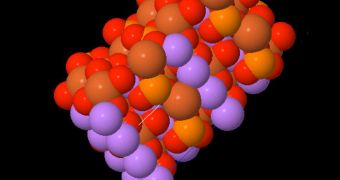Lithium iron phosphate (LiFePO4) is a compound that was discovered about a decade and a half ago. Though it is one of the most promising materials for rechargeable batteries, no one managed to discover how it actually worked until a paper published this week appeared.
The study is a continuation of a paper that was published in the 2011 in the esteemed scientific journal Nano Letters. Its follow-up was published this week in the journal ACS Nano, and it provides a complete series of insights into the behavior of lithium iron phosphate.
LiFePO4 is extremely stable, has great durability, is incredibly safe, and can provide whatever device it powers with a significant surge of electricity on demand. It also displays charge/discharge/recharge characteristics that cannot be replicated by any other material.
Seeing these capabilities, scientists became interested in understanding them. However, for the past 15 years, all studies meant to discover what was behind these incredible properties were conducted in vain, failing to identify their source.
A vast proportion of everything from power tools to electric vehicles today use LiFePO4 as their main energy-storage material. Thanks to a team led by Martin Z. Bazant, an associate professor of chemical engineering and mathematics at MIT, experts now know how it works.
Scientists were especially interested in figuring out why the nanoparticle form of LiFePO4 was so much more efficient at storing energy than the standard variant. Bazant conducted the new work with postdoctoral student Daniel Cogswell.
Together, the experts discovered that the nanoparticle material does not get separated into different phases, as the bulk variant does. Rather, it passes through a quasi-solid solution state, which doesn't give it sufficient time to complete phase separation, therefore removing the limit on its power capacity.
Interestingly, the team also found that the material tends to work better at higher temperatures, which is usually uncommon for compounds that make up batteries. Generally speaking, these materials get more damaged the higher the temperature goes.
Bazant says that it took him five years of continuous research to finally crack this mystery. The way is now clear for new improvements to be brought to this material.

 14 DAY TRIAL //
14 DAY TRIAL //